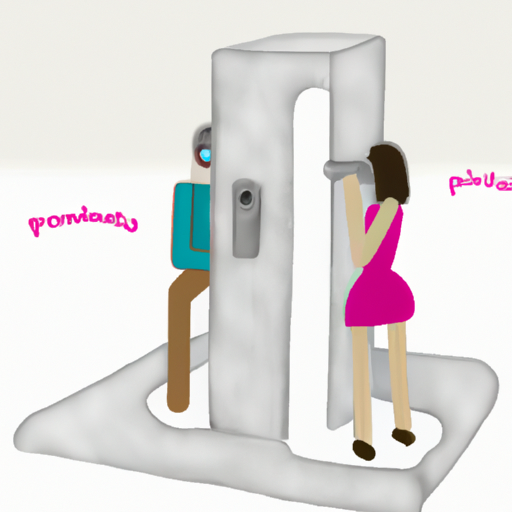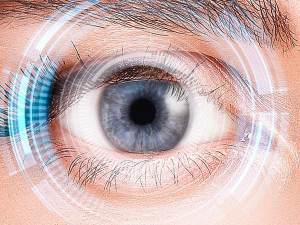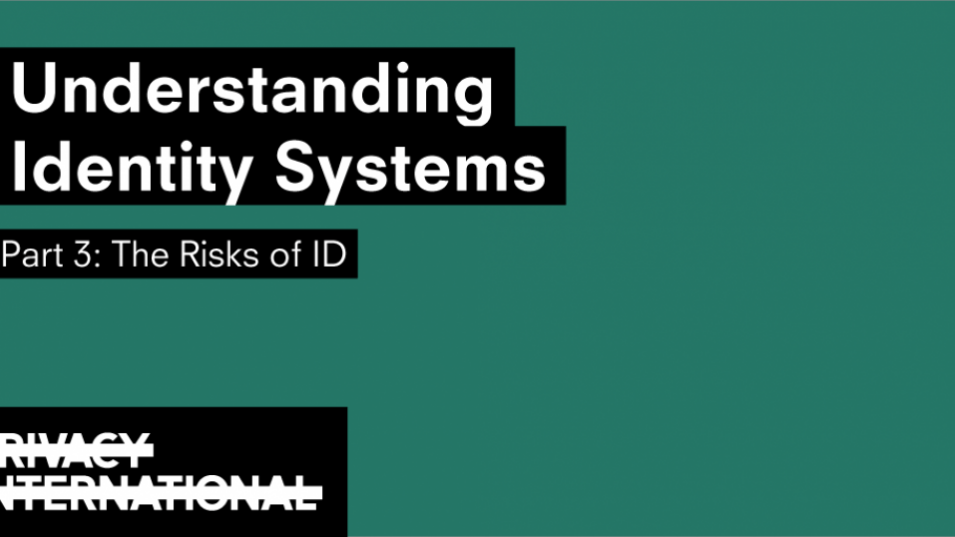-
Table of Contents
- Introduction
- The Impact of Surveillance Technology on Loss of Privacy in Public Spaces
- How to Balance Privacy and Security in Public Spaces
- The Pros and Cons of Loss of Privacy in Public Spaces
- The Role of Government in Protecting Privacy in Public Spaces
- How Social Media is Affecting Loss of Privacy in Public Spaces
- Conclusion
“Protecting Your Privacy in Public Spaces: It’s Your Right!”
Introduction
The concept of privacy in public spaces has been a long-standing issue in our society. With the rise of technology, the ability to monitor and track individuals in public spaces has become increasingly easier. This has led to a decrease in privacy in public spaces, as individuals are now subject to surveillance and tracking. This has raised concerns about the potential for abuse of power and the potential for individuals to be monitored without their knowledge or consent. This paper will explore the implications of the loss of privacy in public spaces, and the potential for abuse of power. It will also discuss potential solutions to the problem, such as increased regulation and the use of technology to protect individuals’ privacy.
The Impact of Surveillance Technology on Loss of Privacy in Public Spaces
It’s no secret that surveillance technology has become increasingly pervasive in public spaces. From CCTV cameras to facial recognition software, it seems like there’s no escaping the watchful eye of Big Brother. But what impact does this have on our privacy?
Well, it’s safe to say that the loss of privacy in public spaces is a real concern. After all, when we’re out and about, we expect to be able to go about our business without feeling like we’re constantly being monitored. Unfortunately, with the rise of surveillance technology, that’s becoming increasingly difficult.
But it’s not all doom and gloom. While it’s true that surveillance technology can be intrusive, it can also be used for good. For example, it can help to deter crime and keep people safe. It can also be used to monitor traffic and help with crowd control.
So, while it’s true that surveillance technology can have a negative impact on our privacy, it can also be used for positive purposes. And, if used responsibly, it can help to make public spaces safer and more secure.
Of course, it’s important to remember that surveillance technology can be abused. That’s why it’s important to have laws and regulations in place to ensure that it’s used responsibly.
So, while it’s true that surveillance technology can have a negative impact on our privacy, it can also be used for positive purposes. And, if used responsibly, it can help to make public spaces safer and more secure.
So, the next time you’re out and about, don’t be too quick to bemoan the loss of privacy. After all, surveillance technology can be a force for good. Just remember to keep an eye on Big Brother!
How to Balance Privacy and Security in Public Spaces
When it comes to balancing privacy and security in public spaces, it can be a tricky tightrope to walk. On one hand, we want to ensure that our public spaces are safe and secure, but on the other, we don’t want to sacrifice our privacy in the process. So how can we find the perfect balance between the two?
Well, the first step is to make sure that any security measures that are put in place are not overly intrusive. For example, if you’re installing CCTV cameras in a public space, make sure that they are not pointed directly at people, and that they are only used to monitor the area for suspicious activity.
The second step is to ensure that any data collected is kept secure and is only used for the purpose it was intended for. This means that any data collected should be encrypted and stored securely, and should only be accessed by authorized personnel.
Finally, it’s important to make sure that any security measures are not overly restrictive. For example, if you’re installing metal detectors in a public space, make sure that they are not overly sensitive and that they don’t cause too much of a disruption to the flow of people.
By following these steps, you can ensure that you find the perfect balance between privacy and security in public spaces. So go ahead and enjoy your public spaces without worrying about sacrificing your privacy!
The Pros and Cons of Loss of Privacy in Public Spaces
The Pros and Cons of Loss of Privacy in Public Spaces
Ah, the great outdoors! The sun, the breeze, the birds chirping, and the complete lack of privacy. Yes, that’s right, the loss of privacy in public spaces is a real thing. But is it really all that bad? Let’s take a look at the pros and cons of this phenomenon.
On the plus side, the loss of privacy in public spaces can be a great way to make new friends. After all, if you’re out in the open, you’re more likely to strike up a conversation with someone you don’t know. Plus, it’s a great way to get to know your neighbors. Who knows, you might even make a new best friend!
On the other hand, the loss of privacy in public spaces can be a bit of a bummer. After all, it’s hard to relax and enjoy yourself when you feel like everyone is watching you. Plus, it can be a bit awkward when you’re trying to have a private conversation and someone is eavesdropping.
All in all, the loss of privacy in public spaces can be both a blessing and a curse. On the one hand, it can be a great way to make new friends and get to know your neighbors. On the other hand, it can be a bit uncomfortable and intrusive. So, if you’re looking for a little privacy, it might be best to stay indoors!
The Role of Government in Protecting Privacy in Public Spaces
When it comes to protecting privacy in public spaces, the role of government is a tricky one. On the one hand, it is the government’s responsibility to ensure that citizens are safe and secure in their environment. On the other hand, it is also the government’s responsibility to ensure that citizens are able to enjoy their right to privacy.
So, how does the government go about protecting privacy in public spaces? Well, the answer is simple: with a healthy dose of humor!
Yes, you read that right. Humor can be a powerful tool for protecting privacy in public spaces. For example, governments can use humorous signs and posters to remind citizens to be mindful of their privacy. These signs can be placed in public areas such as parks, beaches, and other public spaces. They can also be used to remind citizens to be aware of their surroundings and to be respectful of other people’s privacy.
Humor can also be used to educate citizens about their rights and responsibilities when it comes to protecting their privacy. Governments can use humorous videos, cartoons, and other media to explain the importance of protecting privacy in public spaces. This can help citizens understand the importance of respecting other people’s privacy and can help them make better decisions when it comes to protecting their own privacy.
Finally, governments can use humor to encourage citizens to take action when it comes to protecting their privacy. For example, governments can use humorous campaigns to encourage citizens to report any suspicious activity or to take steps to protect their own privacy.
So, there you have it. Humor can be a powerful tool for protecting privacy in public spaces. Governments can use it to remind citizens to be mindful of their privacy, to educate them about their rights and responsibilities, and to encourage them to take action when it comes to protecting their privacy. So, the next time you’re out in public, remember to laugh it off and protect your privacy!
How Social Media is Affecting Loss of Privacy in Public Spaces
It’s no secret that social media has changed the way we interact with each other and the world around us. But what many people don’t realize is that it’s also having a major impact on our privacy in public spaces.
The rise of social media has made it easier than ever to share our lives with the world. We can post pictures, videos, and updates about our lives with just a few clicks. But this also means that our privacy in public spaces is being eroded.
For example, it’s now common to see people taking pictures and videos of themselves in public places like parks, restaurants, and even bathrooms. This means that anyone can see what you’re doing, even if you don’t want them to.
It’s also becoming increasingly common for people to post their location on social media. This means that anyone can see where you are at any given time, which can be a major invasion of privacy.
Finally, social media has made it easier for companies to track our movements and activities. Companies can use our data to target us with ads and other marketing materials, which can be a major invasion of our privacy.
All of this means that our privacy in public spaces is being eroded more and more every day. We need to be aware of the implications of our social media use and take steps to protect our privacy. Otherwise, we risk losing it altogether.
Conclusion
In conclusion, the loss of privacy in public spaces is a growing concern in today’s society. With the rise of technology, it is becoming increasingly difficult to protect our privacy in public spaces. As a result, it is important to be aware of the potential risks and take steps to protect our privacy. This includes being mindful of the data we share online, using strong passwords, and being aware of our surroundings. Ultimately, it is up to us to protect our privacy in public spaces.








